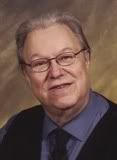
From the Zoo to Music Hall
 Charles Parsons discovered opera at approximately 2:03 p.m.
Feb. 6, 1952. He was 11 years old:
Charles Parsons discovered opera at approximately 2:03 p.m.
Feb. 6, 1952. He was 11 years old:
“I was just
wandering around my parents’ house and I went into the guest bedroom and turned
on the radio. A man’s voice (Milton
Cross, hosting a Metropolitan Opera broadcast from
“I didn’t know what an opera was. I didn’t know that 11-year-old boys weren’t supposed to like opera. It was the first act of Verdi’s ‘Otello,’ so in one magical moment I found my two great loves, opera and Shakespeare.”
Parsons, 67, has
bundled all that love into a 506-page history of Cincinnati Opera, the nation’s
second oldest opera company (after the Met).
Entitled “A Celebration of Cincinnati Opera” and published by Clifton
Hills Press ($45), the book spans the company’s entire 87 years, from its
founding at the Cincinnati Zoo in 1920 to the 2007 summer season. There is even a pre-history dating to the
very first opera performance in
For Parsons’ first two decades, that meant opera at the Zoo (the company moved to Music Hall in 1972). The book’s original title, “Downwind from the Elephants,” scrapped in favor of the less earthy, but more refined “Celebration,” is lovingly illustrated in the first 56 chapters, which contain a wealth of anecdotes about the days when sopranos and tenors competed with peacocks, seals and lions.
Opera at Music Hall became “much more formal,” he said (also more comfortable since the thermometer could hit over 100-degrees onstage at the Zoo). “It’s like any big opera house now, but they certainly do wonderful work there.” During the demolition of the Zoo pavilion, Parsons’ fellow usher Nancy Helwig recovered his seat, row 2, seat 11, and gave it to him for his birthday.
A graduate of the
His “day job” for the past 28 years has been as a librarian in the Robert S. Marx Law Library at U.C. (government documents and technical services). Before that, he worked in films and recordings at the downtown public library. It was at the public library that he got the idea for the opera index. “A good friend of mine was working there and for Christmas he had gotten a book called ‘Reginald Guilford’s Encyclopedia of British Film.’ He said, ‘has anything like this ever been done for opera?’ Since I was in a library, it was easy to find out. The opera index began on Jan. 1, 1974.”
The course of his
research took him to
Writing his new book has taken about three years, he said, “but in a way, I’ve been writing it since 1952. I went to my first opera at the Zoo and for some reason, I started a clipping collection. Since then, I’ve had this huge archive. I had access to the opera’s archives, so I was able to go back to 1920, but most of it from ’52 on is from my own archives.”
Parsons kept journals, too, about what went on behind the footlights – and in front of them, since he ushered at the opera for 33 years. The result is exhaustive scholarship mixed with vivid anecdotes You can learn how many performances of how many operas took place in 1952 (22 performances of 10 operas -- quite a contrast to today’s 10 of 4) and who sang the Three Villains in “The Tales of Hoffmann” in 1978 (Justino Diaz). Interspersed with the facts and figures are vivid tales of missing tenors (1987), Lohengrin’s right hook to the jaw (1926) and the duck who attended the final performance at the Zoo (1971).
Parsons interviewed many people for the book, including singers such as bass James Morris and former general directors Styrk Orwoll and James de Blasis. It’s a hefty tome, 8 ¼ x 10 ¾ inches and over three pounds (paperback). So far, it lacks an index, though a separate cross-referenced annals volume has been compiled and may be published separately, or on demand, Parsons said.
It is not a quick read and to retrieve specific information, you need to know where to look, since the chapters are organized by season. Photo illustrations include over 40 of opera productions going back to 1930, plus a gallery of selected singers, conductors, designers and administrators. It is a vital contribution to American opera history and will be cherished by anyone who has attended Cincinnati Opera over the years, especially in its pre-Music Hall days.
All proceeds from Parsons’ book will benefit Cincinnati Opera. “This is my present to the company,” he said.
Parsons likes to dedicate his books to people, usually in a foreign language.
“The first one was dedicated to my parents. It says, ‘quelque chose doit nous survivre” (“something should survive us”). Since I have no heirs, these are my children.”
“A Celebration of